Are you planning a trip and wondering what kind of Iceland weather to expect? We’ve got you covered with a breakdown of everything from the average temperature in Iceland by month to the number of daylight hours and the likelihood of rain.
If you’re specifically curious about the Reykjavik weather by month you can expect it to be on the upper end of the Iceland temperature averages we provide as Reykjavik remains warmer throughout the year than much of the rest of the country.
Planning your trip to Iceland last minute?
Make sure to book your hotels and tours in Iceland in advance to ensure availability! The longer you wait, the more difficult it gets. Here are my top picks for your trip:
Top Experiences And Tours In Iceland:
- Golden Circle Full Day Tour From Reykjavik (Likely to sell out!)
- Silfra Snorkeling Tour (Includes photos + only small group)
- South Of Iceland Full Day Trip (Our pick!)
- Whale Watching In Reykjavik (On a luxury yacht)
- Northern Lights Bus Tour (Great to go with a local)
- Ice Cave Tour And Glacier Hike (Likely to sell out)
Tickets You MUST book in advance:
- Keflavik > Reykjavik Bus Airport Transfer (Skip the line!)
- Sky Lagoon Entrance Ticket (Includes 7-step spa ritual)
- Blue Lagoon Entry Ticket With Drink (Likely to sell out!)
Top picks for places to stay in Iceland:
- Hotel South Coast (Great central location)
- Grandi Reykjavik (Includes free breakfast)
- Hotel Kria (Close to black sand beach)
- Hotel Skaftafell (Mid-range price)
There’s never a bad time to visit the land of fire and ice. Each time of year offers something special. Whether you’re soaking in a hot pot late at night under the midnight sun or are chasing after the elusive Northern Lights bundled in your warmest cold-weather gear, you’re in for a memorable experience.
Iceland weather is often rainy, often cold, and nearly always unpredictable, but if you come prepared with clothes to accommodate all kinds of weather you’ll be able to get out and explore the stunning natural landscapes of Iceland regardless of what the weather brings.
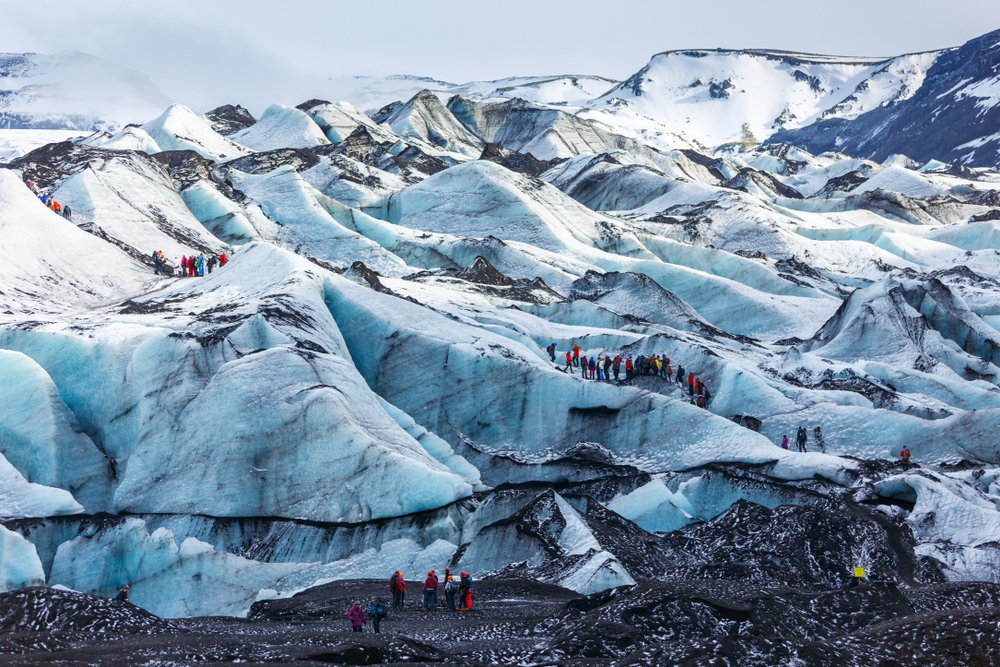
Is It Always Cold In Iceland?
Is Iceland cold? Yes, it’s cold but not as cold as you might think. It also depends on your definition of cold.
In July, weather in Iceland averages between 48-57℉. On a sunny day, Icelanders can be seen sun tanning on the porch of their summer house. For most visitors, 57℉ is still sweater weather, but it’s comfortable and great for hiking.
In January, the average temperature in Iceland is 31℉. You’ll want a parka and gloves but it’s not cold enough to prevent people from venturing outside in the winter wonderland and taking in the snow-draped landscape.

What Is The Hottest Month In Iceland?
How warm does it get in Iceland? Visit in July and you’ll find out. July is the hottest month of the year with average temperatures ranging from 48-57℉.
With long hours of daylight and comfortable temperatures that make you consider breaking out the shorts you inexplicably brought on the trip, July is a peak month for tourism.
Icelanders and sheep alike find patches of sunlight to suntan in at this time of year. The landscape becomes a lush green, flowers bloom, and the country feels alive.

What Is The Coldest Month In Iceland?
How cold is Iceland? Well during January, the coldest month of the year, you’ll experience temperatures ranging from about 27-36℉.
While January doesn’t experience the same spikes in tourism as the summer months, it’s an ideal time for viewing the Northern Lights and draws tourists seeking this stunning natural light show.
In the winter, the temperature in Iceland is cold, but not unbearable. With a parka, snow boots, crampons, and warm gloves, you can hike glaciers, visit frozen waterfalls, and go ice caving. And when you’ve had enough of the cold, you can always thaw out in a hot tub.

Weather In Iceland In January
What is the temperature in Iceland by month? Let’s start with January.
When it comes to the weather in Iceland in January, think cold and dark, wet, and windy with the potential for a handful of sunshiny days of beautiful, lacy, snow-draped landscapes in between. It’s also one of the best months for potentially spotting the Northern Lights.
The temperatures range from 27-36℉, making January the coldest month of the year. That being said, the cold alone (without wind or rain) is quite manageable as long as you bring a proper wardrobe along.
Expect winter weather in Iceland and dress in warm, waterproof clothes, but embrace the cold and slightly smaller tourist crowds, and kick off the new year with some memorable Iceland adventures.
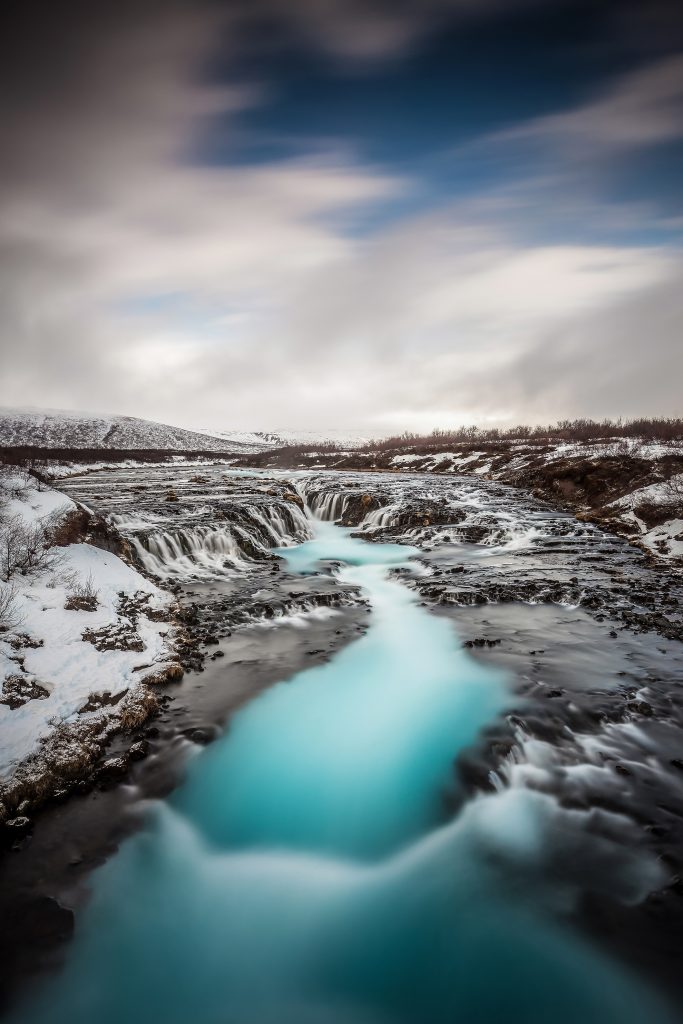
Weather In Iceland In February
Iceland February weather is very similar to the weather in January with temperatures averaging about 32℉. If you’re looking for snow-draped landscapes, February in Iceland is the time of year to see the dramatic landscapes laced with white.
After receiving just a few hours of daylight in January, Icelanders welcome the rapidly increasing daylight hours in February. The month starts with 7 hours of daylight and ends with 10 hours as the country starts to emerge from the long winter.
Although the daylight hours are beginning to increase, there are still plenty of hours of darkness for trying to catch the Northern Lights.
Due to unpredictable weather conditions and high precipitation, many of the roads in remote parts of Iceland are impassable. If however, you’re willing to stick largely to the capital and the tourist hot spots along the south coast, you’re in for a real treat with beautiful wintry landscapes.
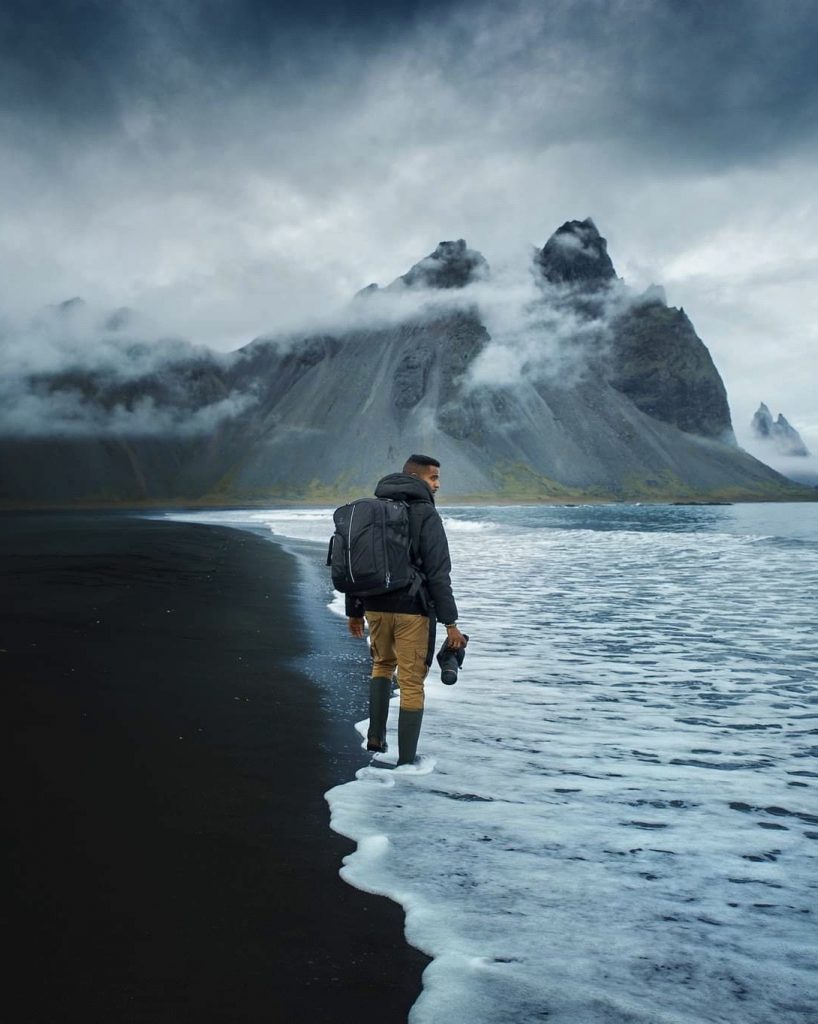
Iceland Weather In March
The country emerges from the long dark winter and enters spring in March, however the Iceland weather in March remains very similar to that of the previous two months with an average low of 28℉ and a high of 38℉.
There are a couple of changes that happen in March. The first is that the daylight hours continue to increase until they reach just over 13 hours by the end of the month. There’s also considerably less snow as what little snow remains tends to stick to the mountains. Be prepared for significant rainfall however, as March in Iceland is one of the rainiest months of the year.
With winter ending, but the warmer, lush summer months not yet begun, March is considered part of the off-season in Iceland. This means off-season rates and smaller tourist crowds, which is always a plus when traveling.
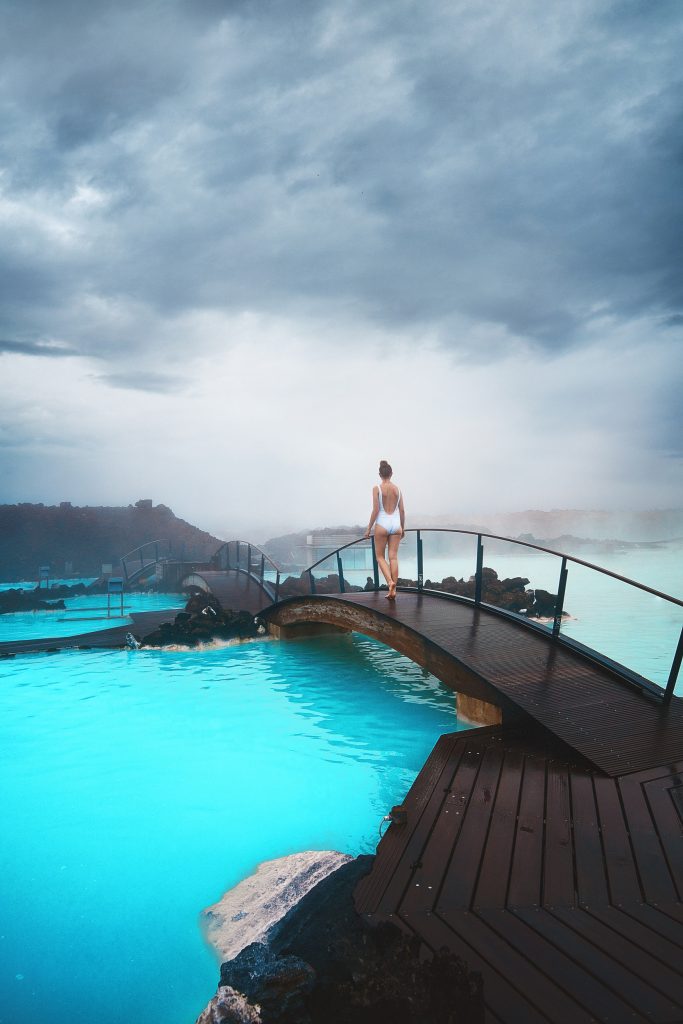
Weather In Iceland In April
April brings spring weather to Iceland. You can expect the temperatures to average between 32℉ and 41℉. By the end of the month, there’s nearly 17 hours of daylight, the amount of rainfall drops, and flowers and green grass start to poke through, announcing spring’s return.
New life is born and adorable lambs roam the hills in spring in Iceland. With the roads clearing up you’ll see plenty of young animal life as you explore more parts of the country.
The weather is still unpredictable however. Though unlikely to snow, rain and wind are ever-present. Ironically, Icelanders celebrate the first day of summer at the end of April though it never quite feels or looks like summer yet. Don’t forget to check out our guide to April in Iceland!
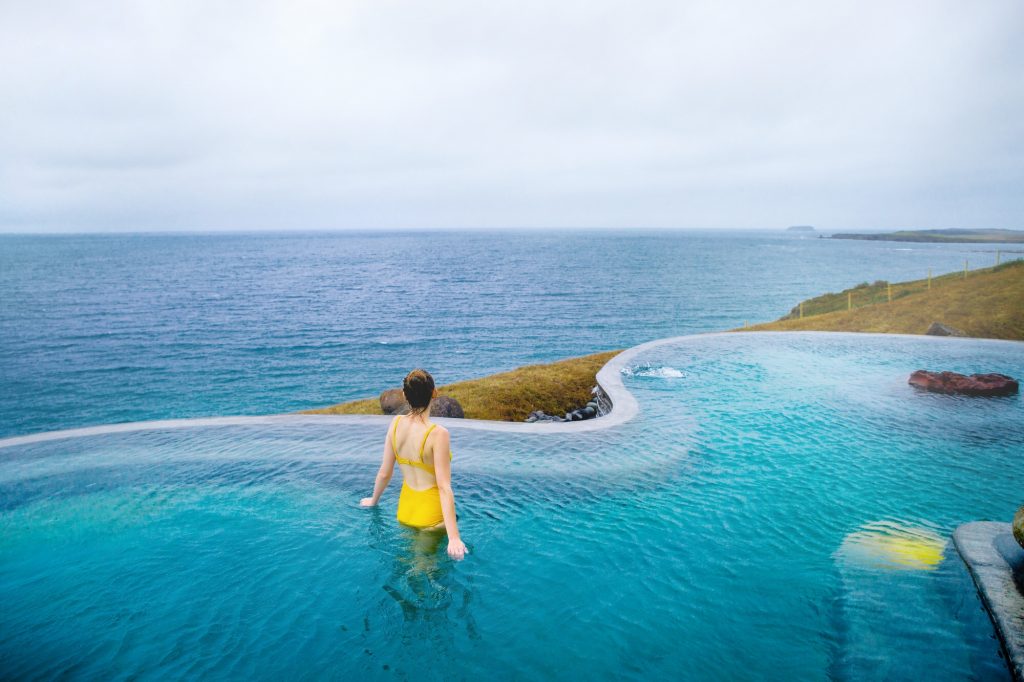
Iceland Weather In May
May sits just outside the high-season summer months making it an ideal time to visit Iceland with long days, reasonable temperatures, slightly cheaper prices, and smaller crowds. The landscape starts to turn green as it begins the transition towards the lush beauty of summer.
Iceland weather in May averages between 40 and 50℉ with limited rainfall. It’s the perfect time to get outside and explore the country’s stunning and diverse landscape. The month starts with roughly 17 hours of daylight and finishes with just over 20 hours so you can maximize the amount of activities you can fit into one day.
Be aware that the long daylight hours mean that the Northern Lights are no longer visible. The Northern Lights season lasts from about September to April. That being said, in May in Iceland, the puffins are back, the roads and hiking trails are free of ice and snow, and the waterfalls flow fiercely so there’s no shortage of adventures to be had.

Iceland Weather In June
It’s June and summer temperatures in Iceland have arrived! Thanks to the weather in Iceland in June, tourists begin flocking to the country making this the beginning of the high season.
June contains the longest day of the year. In the summer, Iceland is known for its midnight sun. This refers to the fact that for much of the summer, the sun hardly sets. Fancy a hike at midnight? Now’s the time.
With average temperatures ranging from roughly 43-51℉, the grass/moss greening, and plenty of light for adventuring, there’s no denying June is an ideal time to visit Iceland.
If you’re thinking of doing a full Ring Road trip or venturing away from the capital, this is the perfect time to tackle those road trips while the roads are open and safe to drive.
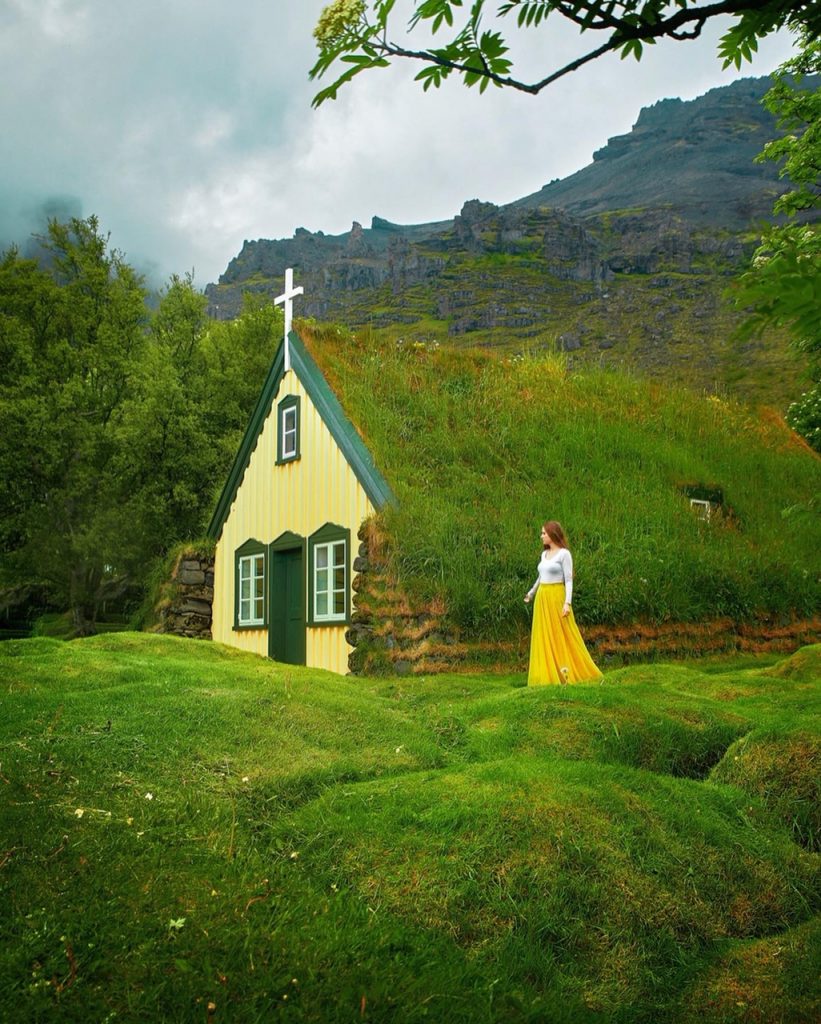
Weather In Iceland In July
If you don’t mind the large tourist crowds, July is the ideal time to visit Iceland. July boasts the hottest temperatures of the year. Though “hot” in Iceland is a relative term.
Temperatures average between 48-57℉ with significant daylight hours and short nights. Iceland weather in July is perfect for long road trips and camping at any one of the country’s picturesque campsites.
Though the summer weather in Iceland is warmer and dryer than many other months, you’d still be wise to bring a raincoat and waterproof gear. Even on sunny days, rain is never too far away when it comes to Iceland, so it’s better to be prepared.

Iceland Weather In August
August is the last true summer month in Iceland and the end of the high season. Iceland weather in August is still pretty ideal as it’s the second warmest month of the year with temperatures averaging 47-55℉.
Though you won’t experience the midnight sun, many tourists prefer August to June and July because the sunrise and sunset times are more standard and won’t affect your sleep schedule as much. At the start of August, you experience over 17 hours of daylight, but that drops to about 14 hours by the end of the month.
Though August brings the warmth of Iceland summer weather, it also tends to be the rainiest of the summer months, so come prepared with proper waterproof gear. While you’ll still experience summer weather in Iceland in August, by the end of the month you’ll notice a shift towards fall.
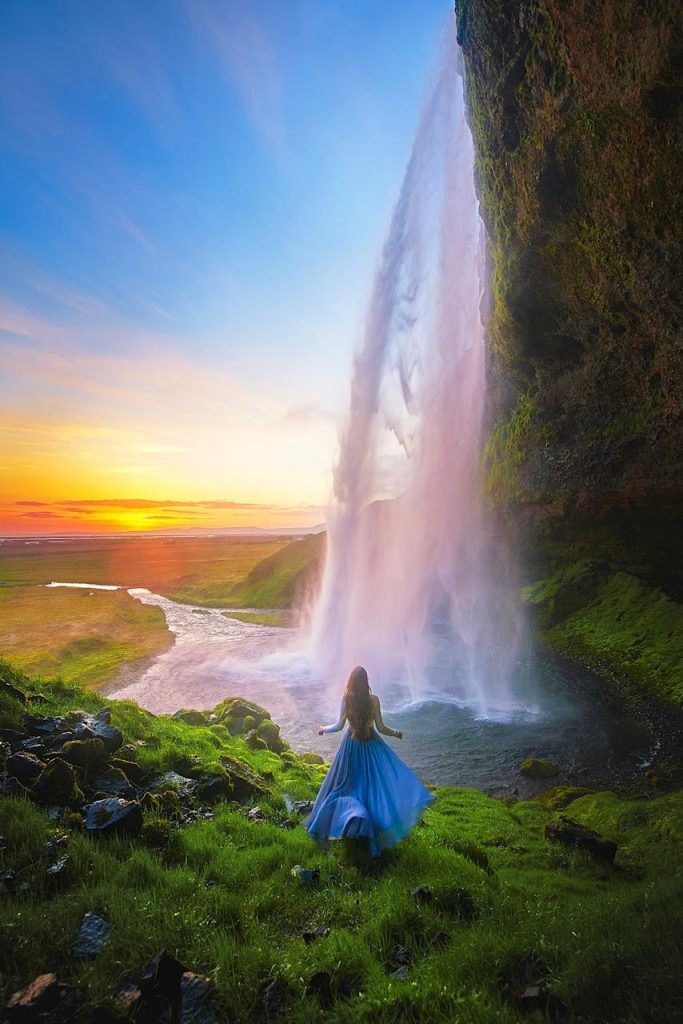
Weather In Iceland In September
Welcome to fall weather in Iceland. The fall season doesn’t last long in Iceland, but it provides a brief and welcome transition period between summer and the impending winter.
With September comes the start of autumn leaves creating a beautiful colored landscape that has not yet frozen over. The weather in Iceland in September is as unpredictable as it is any other time of year with plenty of rain, small doses of sunshine, lots of wind, and often a combination of all three in the same day.
Temperatures average between 43-52℉ with little chance of snow unless you venture into the highlands. This is still an ideal time for adventuring around the country as most roads are still clear and safe to drive.
September is the beginning of the Northern Lights season, so say goodbye to long daylight hours as the country transitions to dark nights. You’ll still get an average of 13 hours of daylight throughout the month, but if you’re hoping for a glimpse of the elusive Northern Lights you might just be in luck.
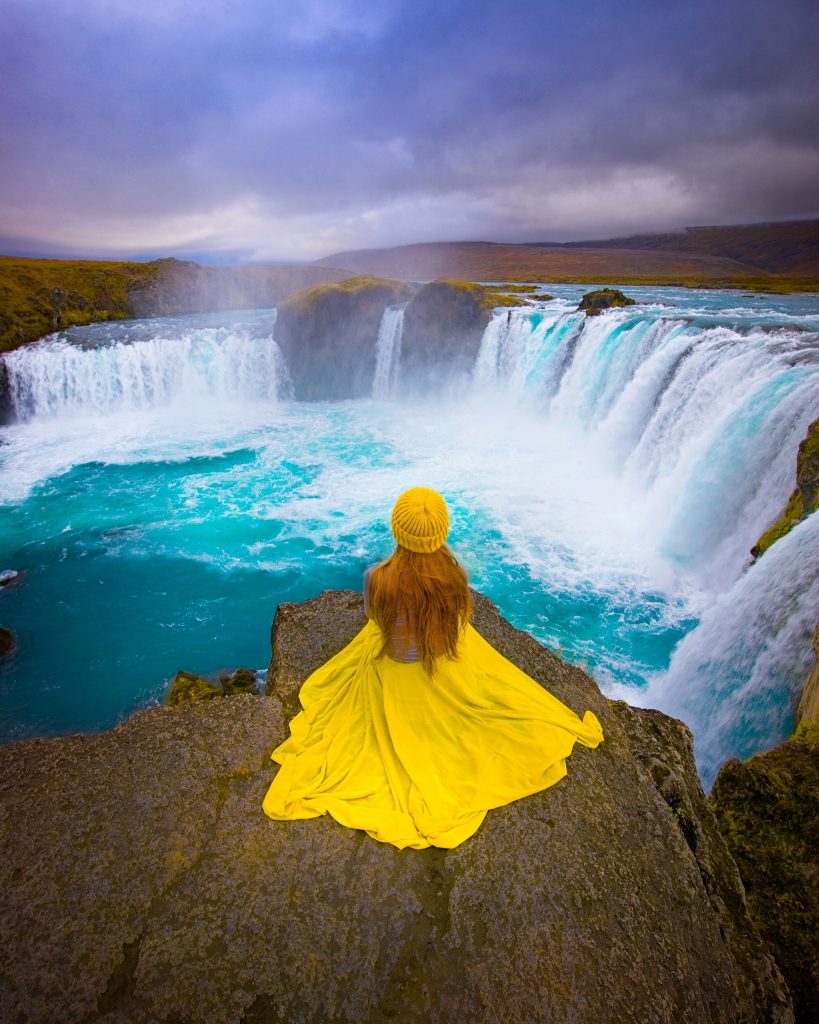
Weather In Iceland In October
Iceland October weather brings the crisp air of fall as the country fully embraces the season before it sinks into winter. Few people visit the country in October which is why it’s the perfect time for you to plan your trip! Smaller crowds and bearable weather have their advantages.
The average weather in Iceland in October includes temperatures between 37-45℉, increasingly present rainfall, and the occasional appearance of snow. Daylight hours drop to around 9 hours a day as the opportunities for viewing the Northern Lights increase.
The major roads remain open for much of the month, so take advantage of the freedom to move about the country and the lack of tourists you’ll have to fight off for that perfect photograph.
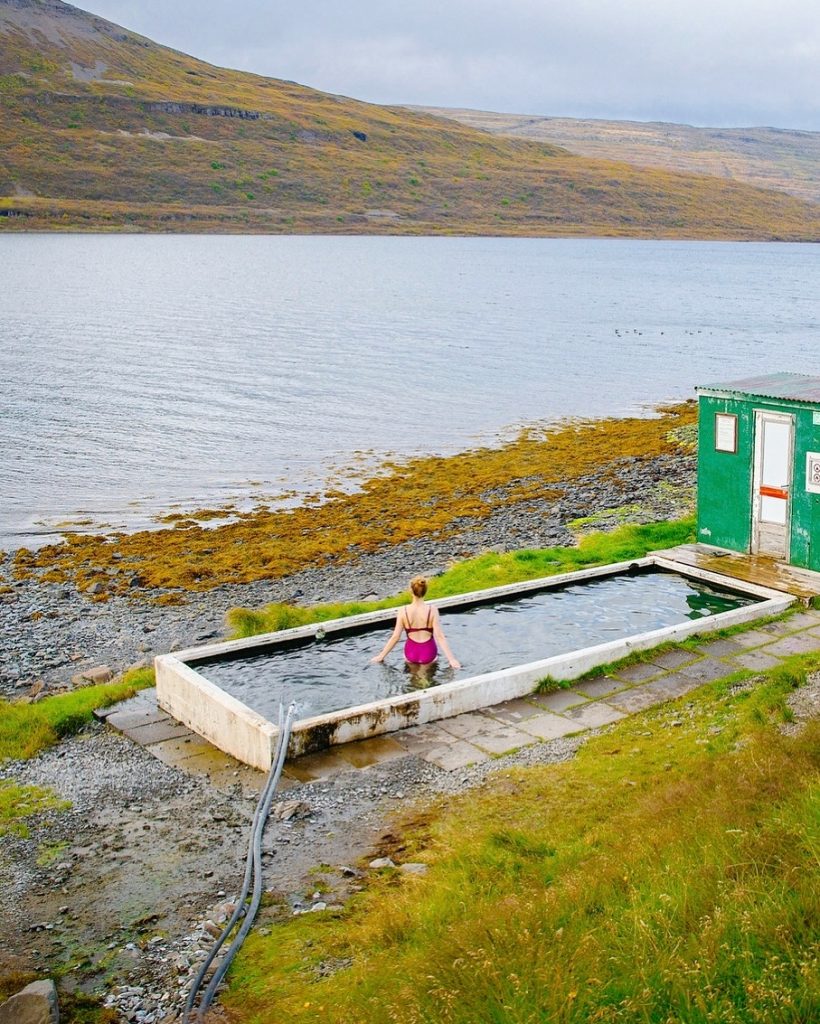
Iceland Weather In November
What is the weather like in Iceland in November? Winter weather in Iceland is in full effect and with average temperatures between 34-39℉, you’re in for chilly but beautiful adventures.
Daylight hours go from 8 hours to start the month down to 5 hours by the end of the month. You have limited hours to pack your activities in, but the longer hours of darkness allow for optimal Northern Lights viewing.
The weather in Iceland in November is snowy and rainy which leads to slick streets that are challenging to drive. Many roads close to the capital will remain open and well maintained however roads into the highlands or up north will start to close as they become impassable. Be sure to check the road conditions frequently so you know what to expect.
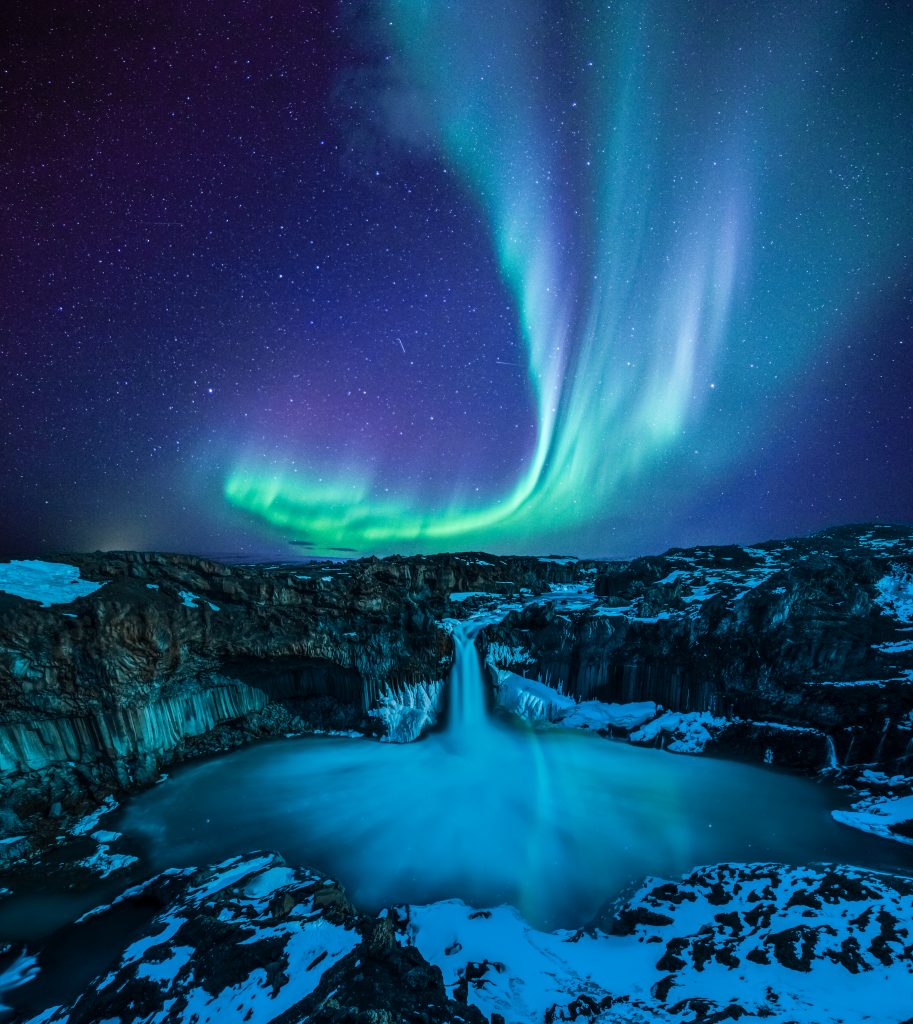
Iceland Weather In December
December in Iceland is the darkest month of the year and one of the wettest, windiest, and coldest months of the year as well. Iceland December weather brings average temperatures of around 32℉.
You can expect long nights with only 4-5 hours of daylight throughout the month. The roads also tend to be icy and snowy with significant road closures around the country. This is a great time of year to stick closer to Reykjavik, thaw out in a relaxing hot tub, and bundle up with a hot chocolate in hand.
Iceland temperatures in winter may not be ideal, but it’s also a beautiful time of year when snow coats the landscape and the country is full of holiday joy, Christmas lights, and Northern Lights. From ice caving and glacier tours to the Golden Circle and natural hot pots, there’s still plenty of fun to be had.
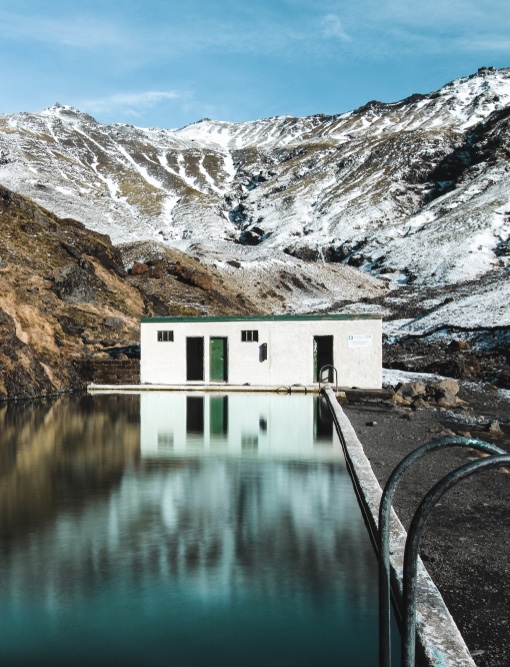
We’re thrilled you’ve chosen to visit the land of fire and ice. This Iceland weather by month guide will help you properly prepare for your trip so you know what to expect and can pack and plan appropriately.
As you check out the Iceland climate by month and decide whether you’re looking for fall colors and minimal crowds or warm long days among the arctic lupines, let us know if you have any questions.
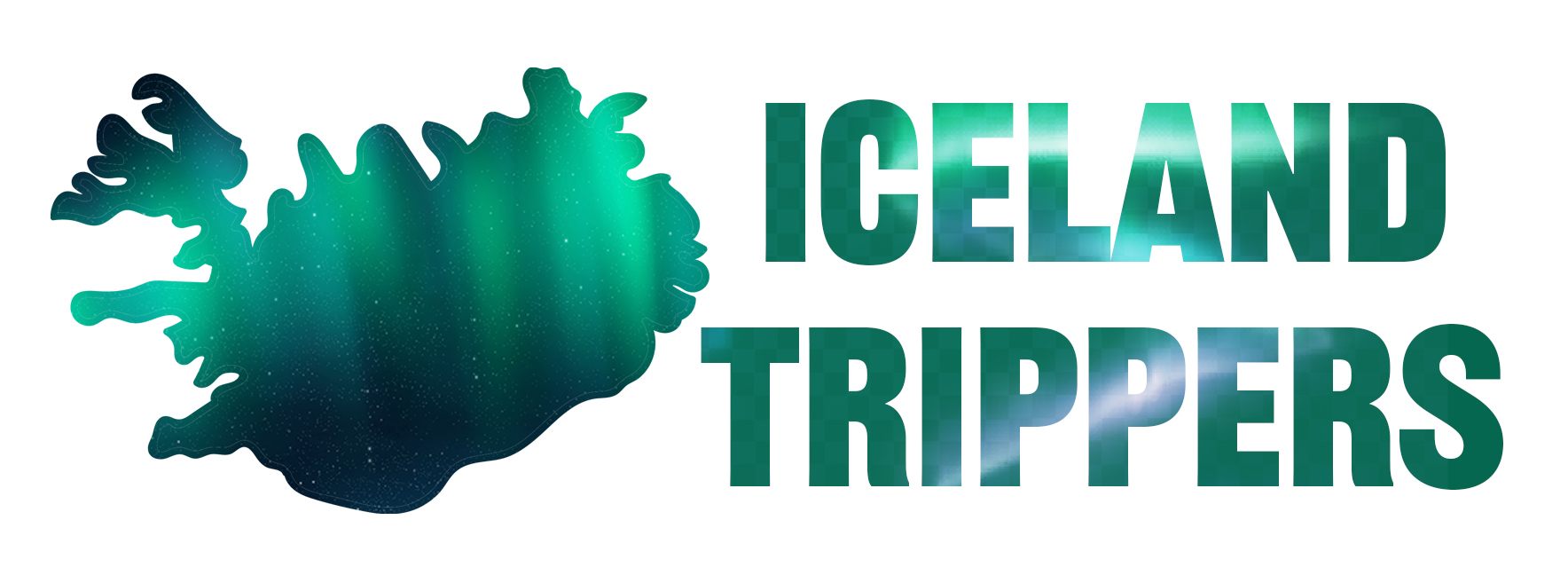
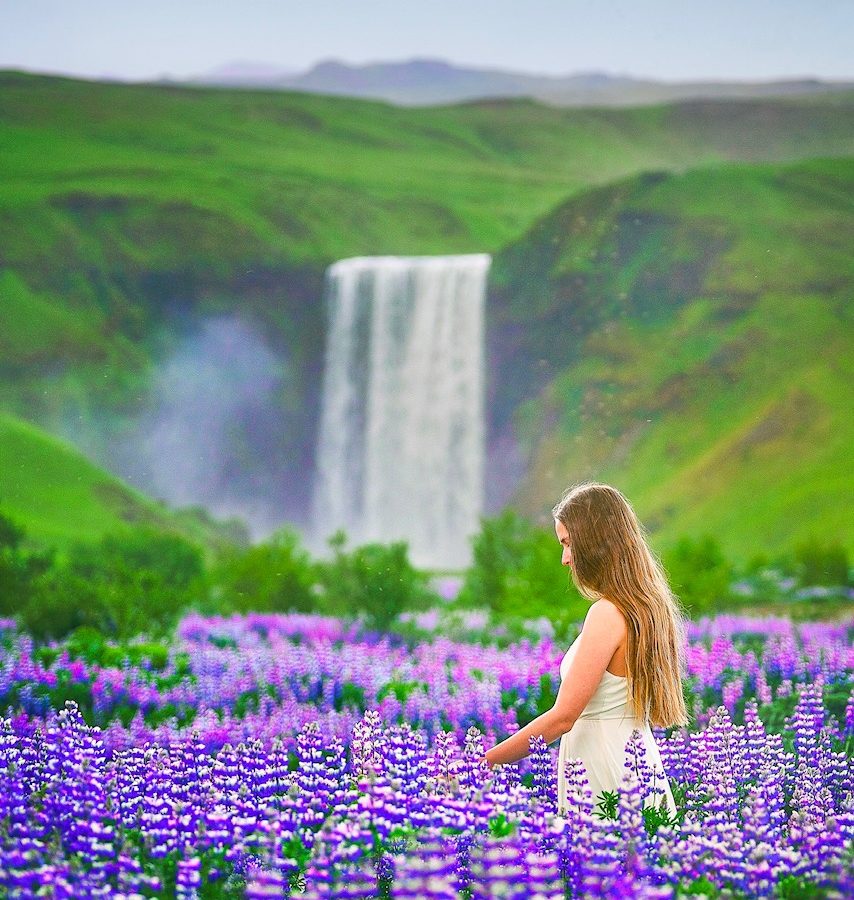
 Best (And Worst) Time To Visit Iceland (Month By Month!)
Best (And Worst) Time To Visit Iceland (Month By Month!)